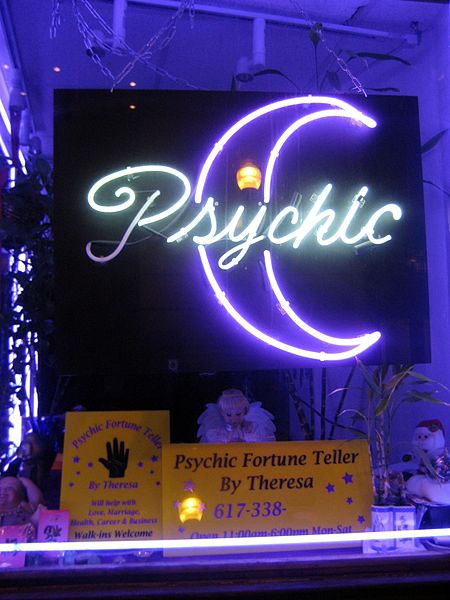Kau chim, kau cim, chien tung, "lottery poetry" and Chinese fortune sticks are names for a fortune telling practice that originated in China in which a person poses questions and interprets answers from flat sticks inscribed with text or numerals. The practice is often performed in a Taoist or Buddhist temple in front of an altar. In the US, a version has been sold since 1915 under the name chi chi sticks. It is also sometimes known as "The Oracle of Kuan Yin" in Buddhist traditions, a reference to the bodhisattva Kuan Yin. It is widely available in Thai temples, known using the Teochew dialect as siam si. The similar practice is also found in Japan, named O-mikuji.
Chien Tung sticks, cylindrical container with 18 inscribed sticks, China, 1800–1920
The lottery and lottery poems in a Hong-Kong temple.
Practicing kau chim at Wong Tai Sin Temple, Hong Kong
Seam Si at a temple in Thailand
Fortune telling is the unproven spiritual practice of predicting information about a person's life. The scope of fortune telling is in principle identical with the practice of divination. The difference is that divination is the term used for predictions considered part of a religious ritual, invoking deities or spirits, while the term fortune telling implies a less serious or formal setting, even one of popular culture, where belief in occult workings behind the prediction is less prominent than the concept of suggestion, spiritual or practical advisory or affirmation.
Gypsy Fortune-Teller (1841) by Taras Shevchenko
Storefront psychic fortune teller in Boston
A fortune-telling storefront on the boardwalk in Point Pleasant Beach, New Jersey
The screene of fortune here behold, fortune-telling game, c.1650–1750








